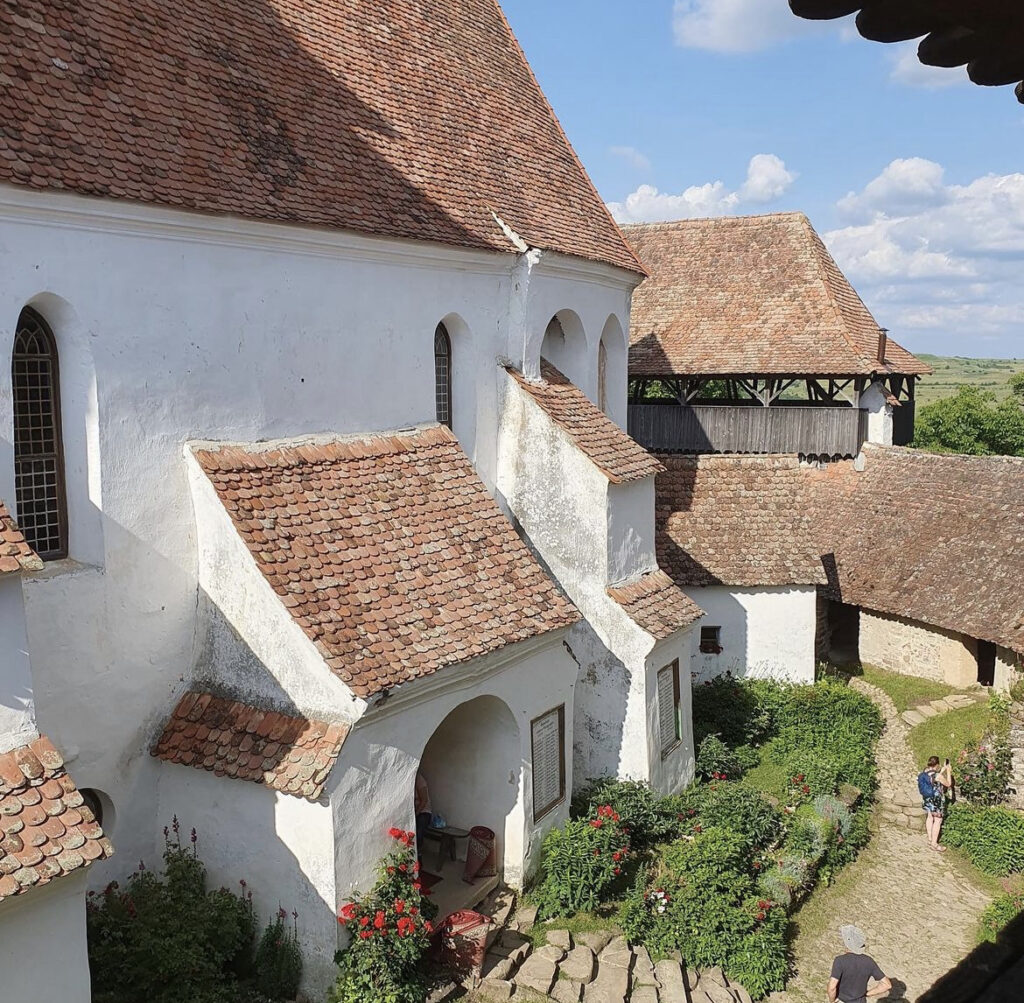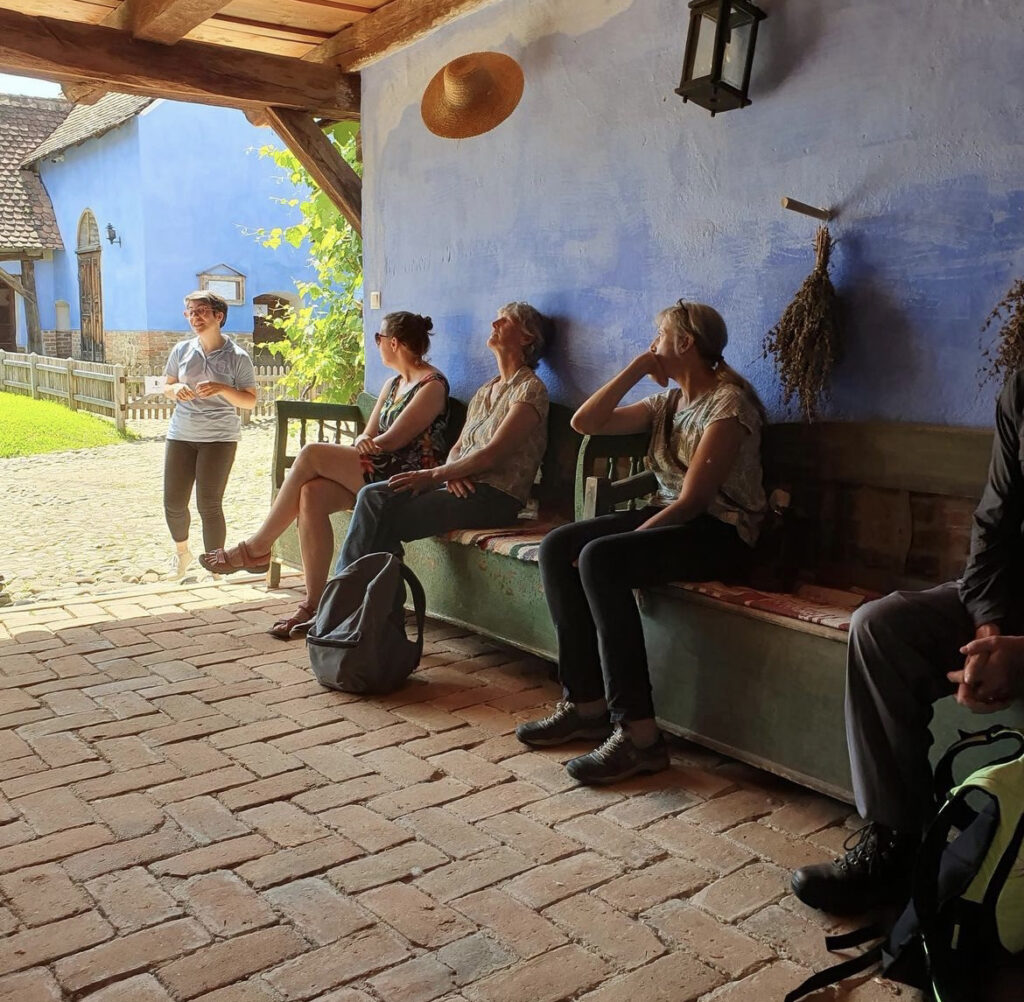Study trip to Transylvania
Eleven members visited Transylvania in central Romania in June on a fact-finding mission for possible future Pasture for Life tours. Former PfL director Sara Gregson reports on a study trip rich in nature, farming and culture.
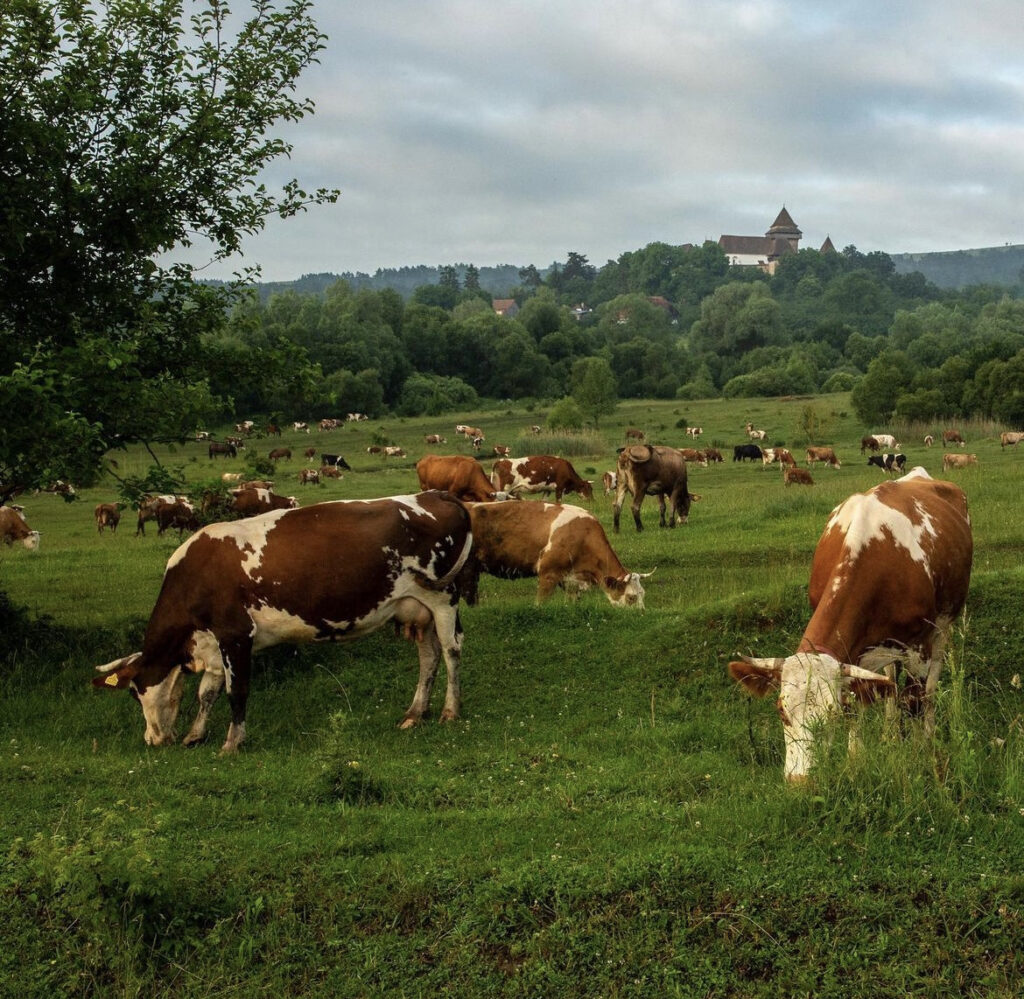
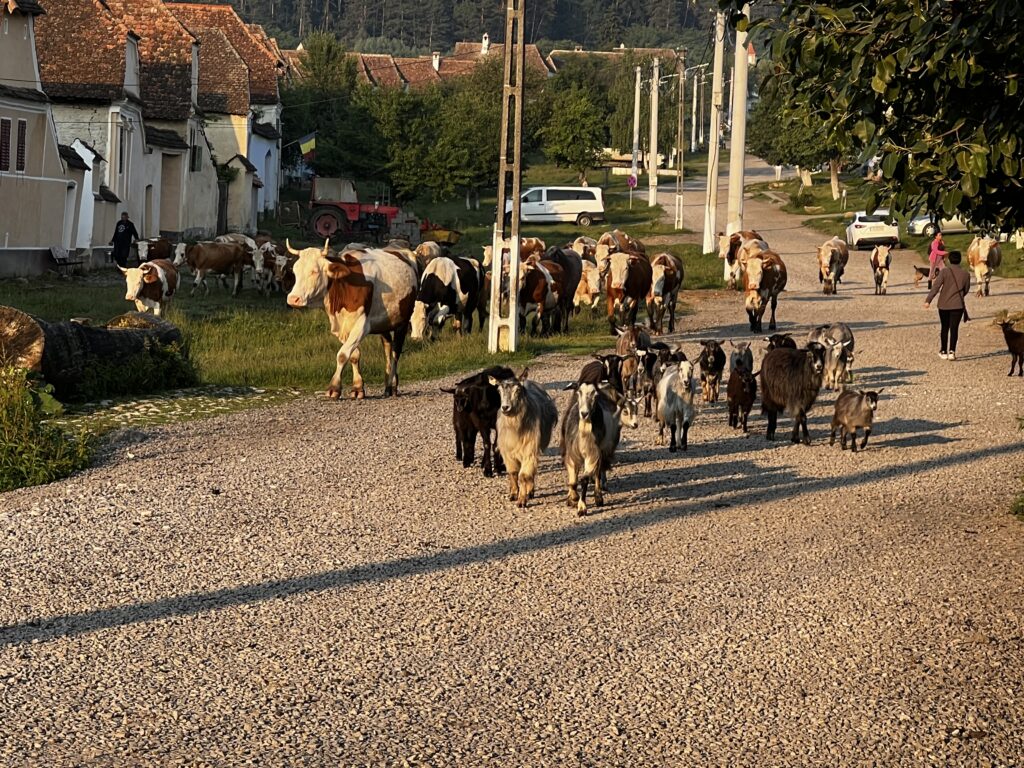 Cows and goats heading out into the village at 6:30am
Cows and goats heading out into the village at 6:30am
We enjoyed five days filled with biodiversity on a mind-blowing scale, subsistence and collaborative farming, small and traditional food manufacturing, alongside history, culture and a lot of tasty pork dishes for breakfast, lunch and dinner.
The progress made by the Romanians post communism under Ceausescu is remarkable, and the country has some of the highest economic growth in the EU since 2010.
Yet visiting traditional Saxon villages in Transylvania is like stepping back in time, with communal cattle and goat grazing and every house growing and producing its own meat, eggs, vegetables, fruit and alcohol – including Palinka, a traditional fruit brandy immediately on offer at every house and restaurant visited.
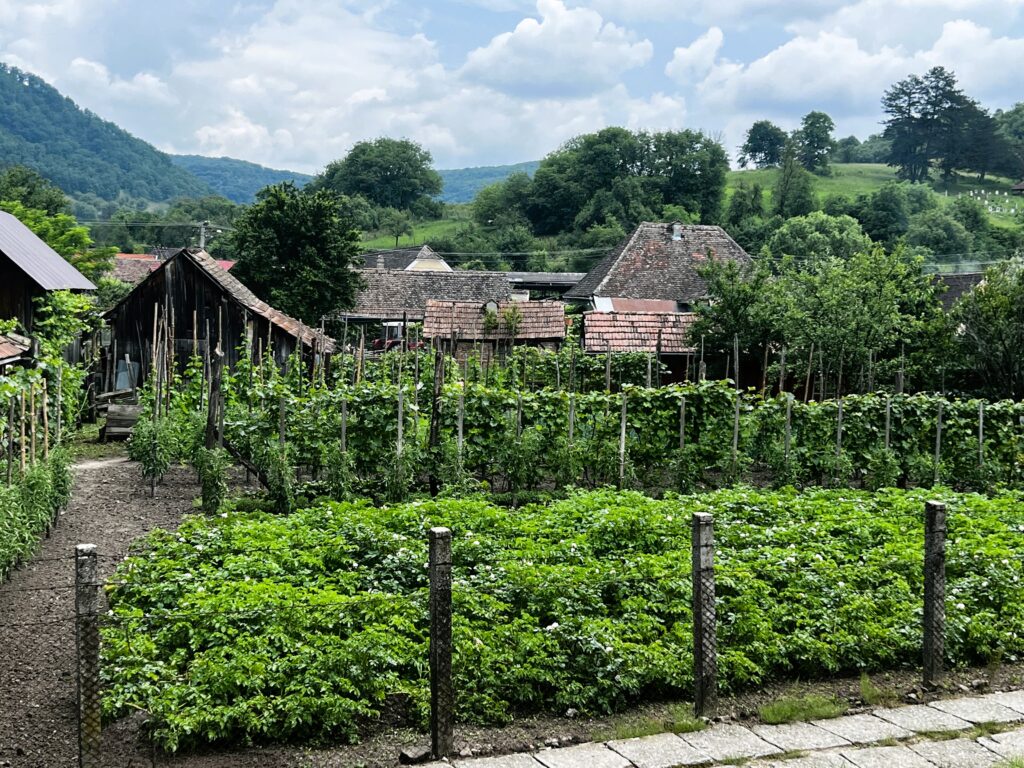 Backyard farming
Backyard farming
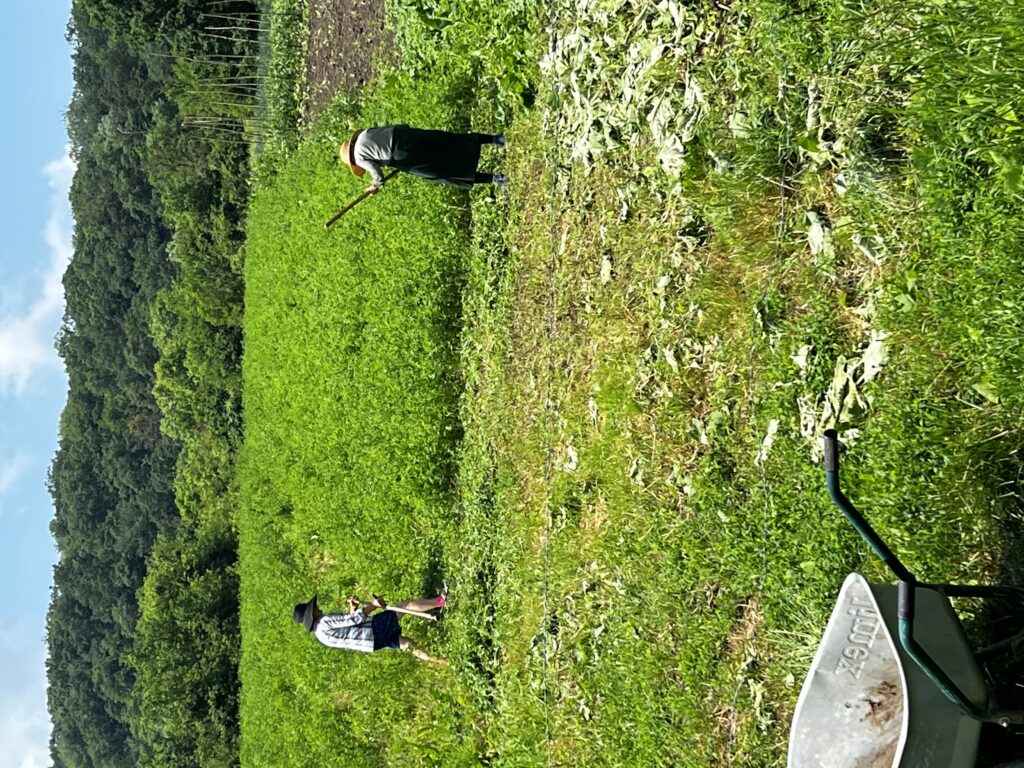 Mother and grandmother scythe luecerne for their pig
Mother and grandmother scythe luecerne for their pig
Agriculture in this region with its rolling hills and mosaic of woodland, grassland and arable fields, is dominated by family farms with non-intensive management. This has allowed the survival of substantial numbers of habitats and animal and plant species, that have retreated or disappeared from much of the rest of Europe.
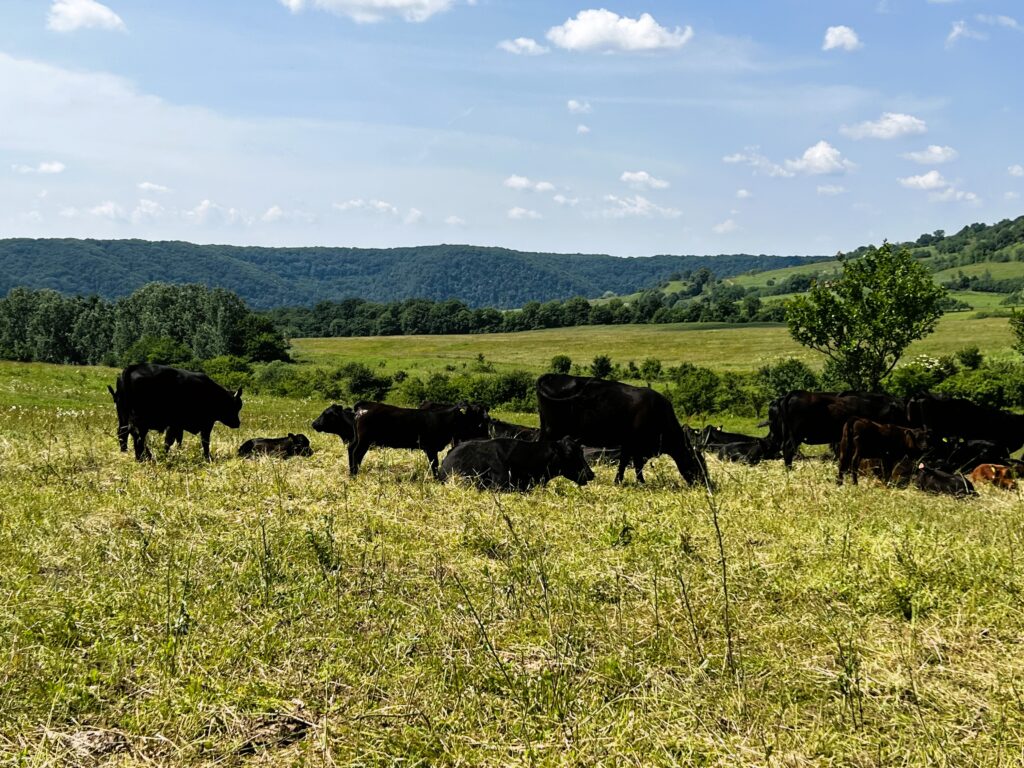 Aberdeen Angus herd
Aberdeen Angus herd
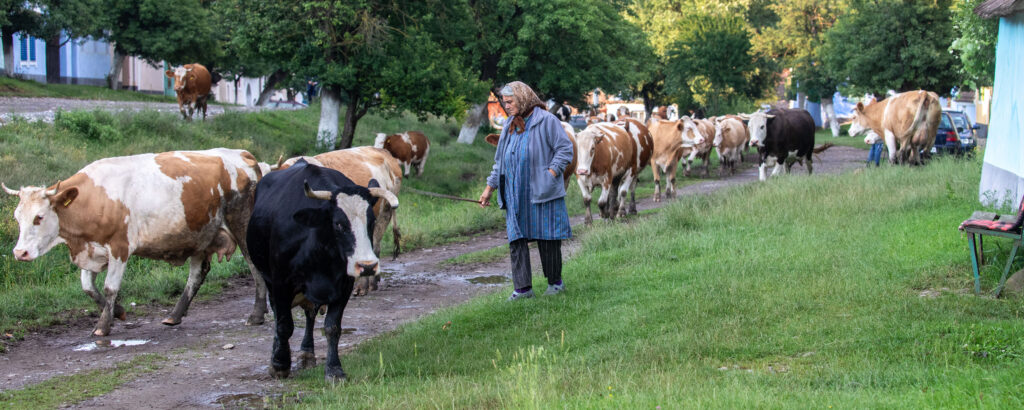
Wildflower meadows
We spent an enchanting morning with British botanist John Akeroyd identifying 20, 30, 40 or even more wildflowers in meadows that have been managed and cut for hay for decades. Species such as sand leeks, zig zag and sulphur clover, grass vetchling, hedge bedstraw, chicory, field scabious, hairy flax and skullcap, to name but a very few.
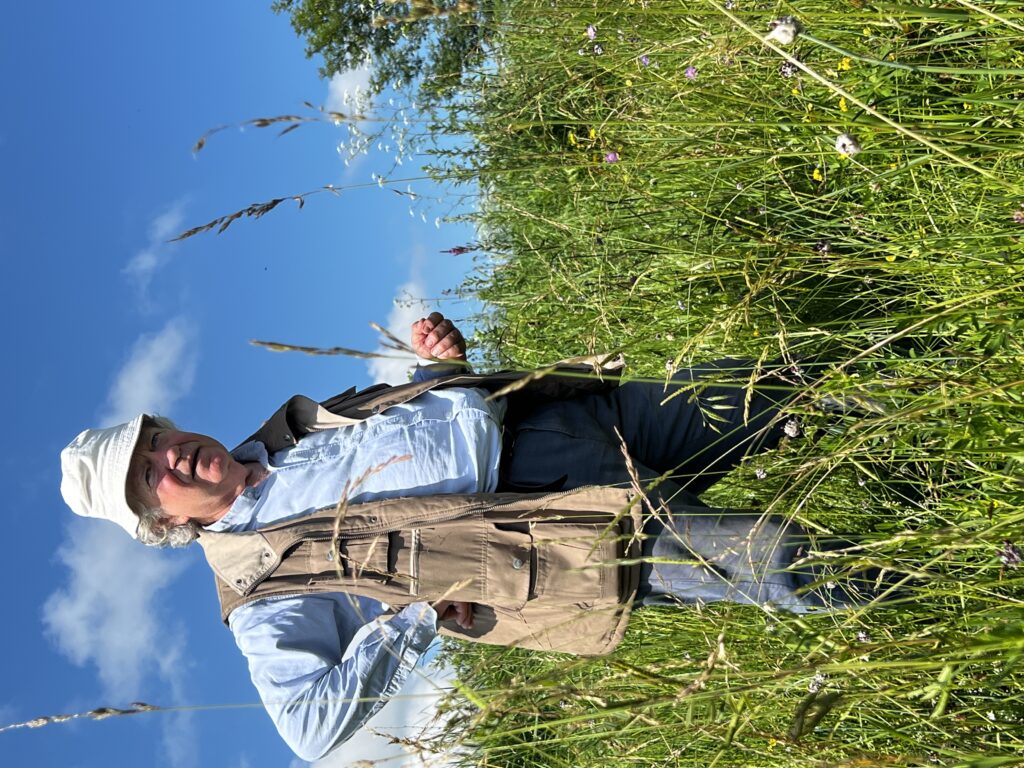 Botanist John Akeroyd in a hay meadow
Botanist John Akeroyd in a hay meadow
The local economy depends almost entirely on farming with only sheep and cattle dairy farming commercially developed on any scale. Cheese from sheep and some goat, milk is mostly consumed locally but dairy companies collect cow milk for processing elsewhere.
Beef and lamb rarely features on Romanian menus. One reason given was that pork became the meat of choice during conflicts with the Muslim Ottomans. Romanians believed the invaders would not take/slaughter their pigs, as they would not want to eat them.
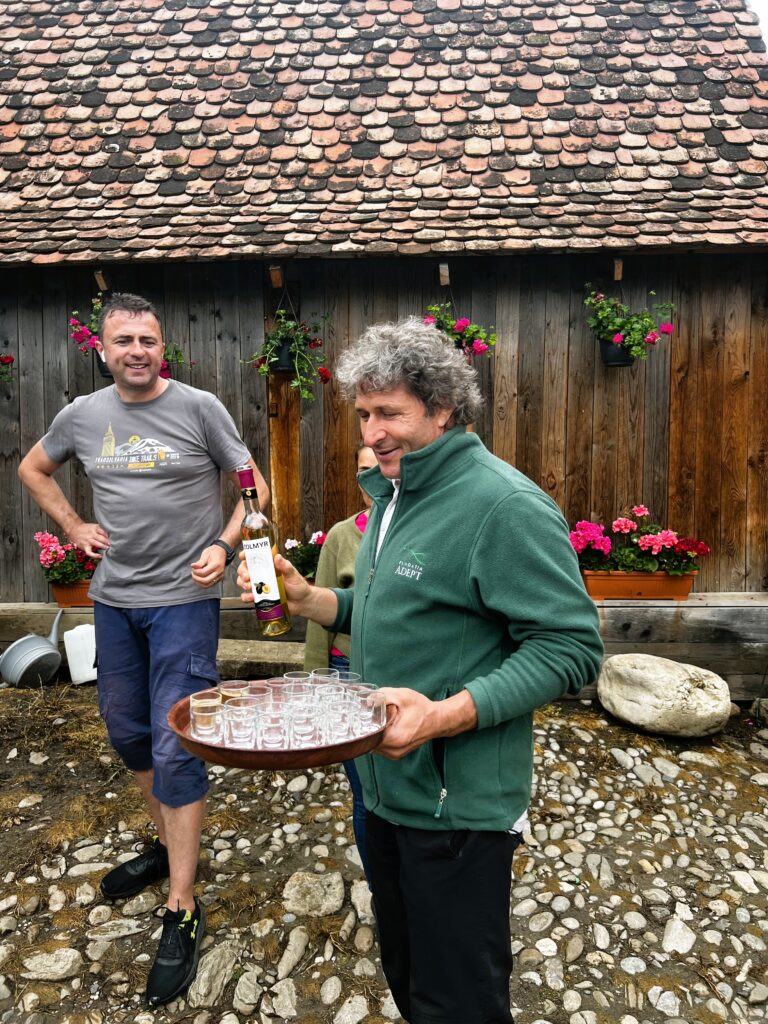 Ben offers round the Palinka
Ben offers round the Palinka
The Pasture for Life crew were beautifully hosted by Laura, Ben and Christi of ADEPT, a conservation NGO centred on farming set up in 2004. They work to protect the ecological and cultural landscape, rural economy and biodiversity of the area. They put farming families and communities at the centre of a holistic, multi-faceted conservation strategy, seeking to generate economic benefits while maintaining ancient links between landscape and livelihood.
For example, ADEPT and other NGOs have helped dairy farmers by building or restoring milk collection points in villages, improving milk prices (around 30p/litre at the time of the visit) and giving direct help to communities in which the milk of one or a few cows may provide a household’s sole cash income.
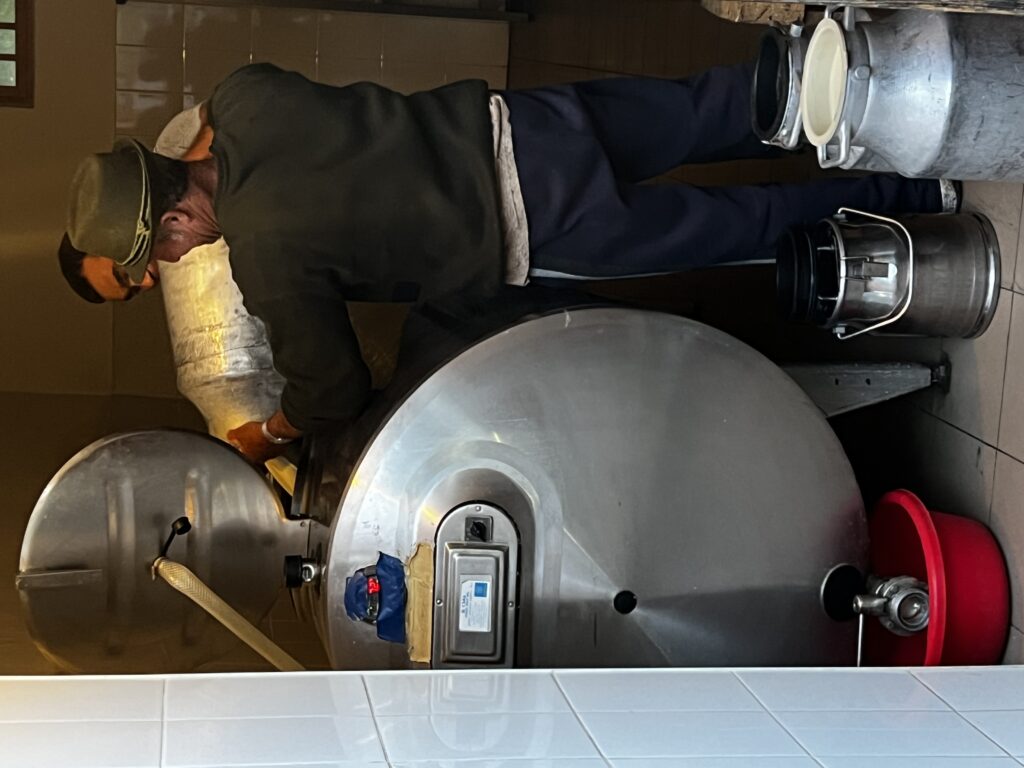 Pouring milk into the village bulk tank
Pouring milk into the village bulk tank
Generally in Transylvania, cattle numbers have fallen owing to low milk prices, driven down by imports from more intensive dairies in Hungary and Poland. Meanwhile, sheep numbers have risen sharply and are often managed by large scale sheep owners outside the area who seriously overgraze the grassland, in which they have no long-term interest.
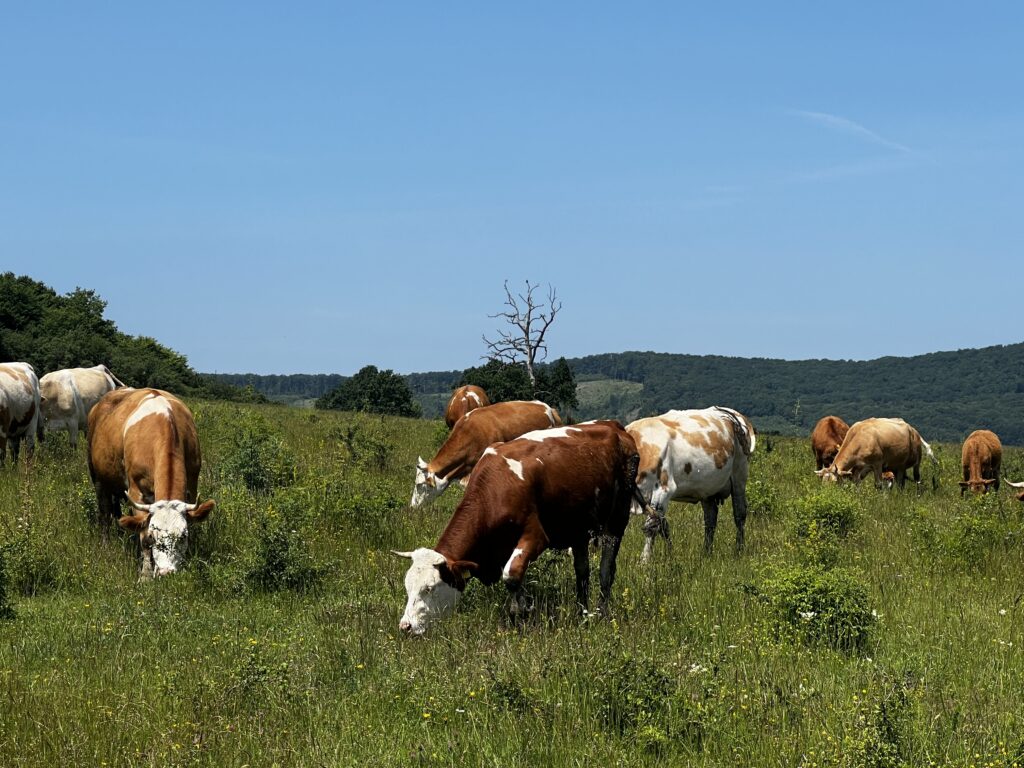 Dairy cows grazing
Dairy cows grazing
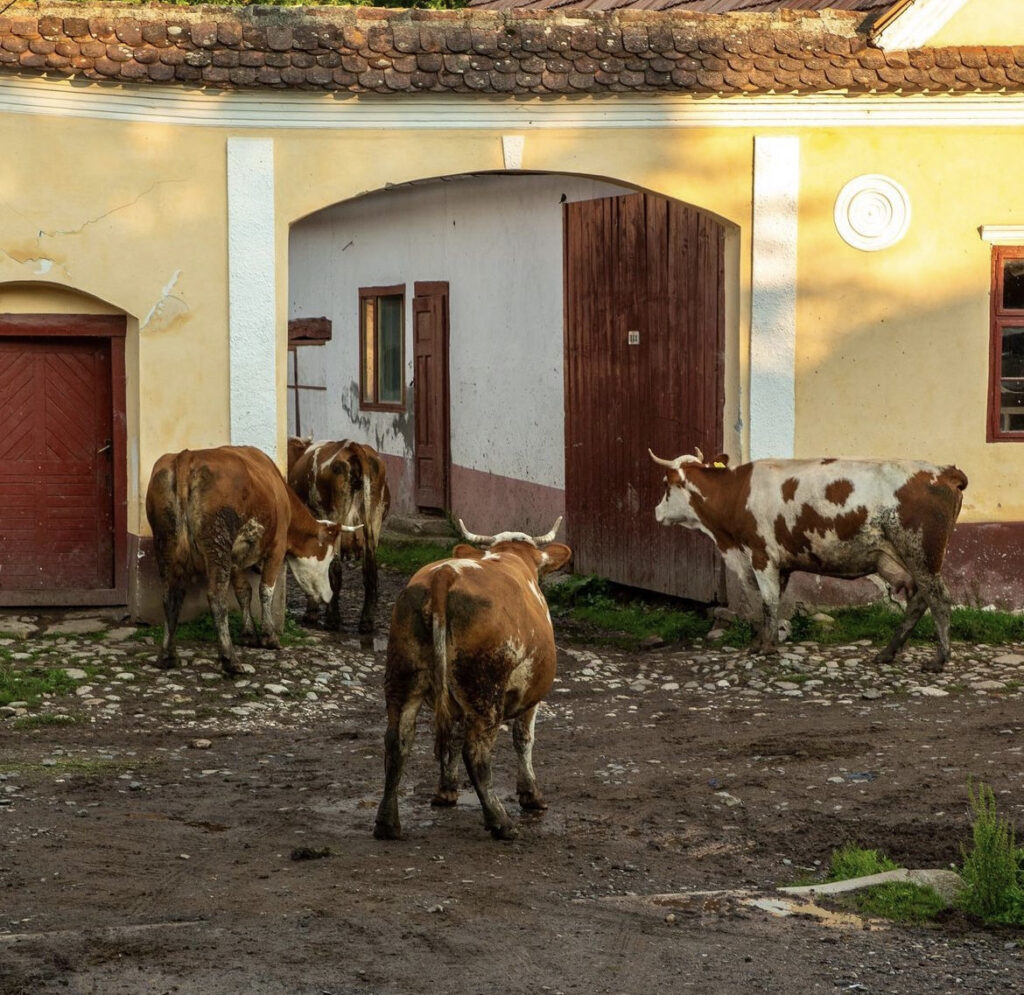
Angofa demonstration farm
This is what had happened at Angofa, a 200ha demonstration farm bought in 2015 and run by ADEPT just outside Sighisoara, one of the most visited tourist destinations in Romania. The well-preserved walled town is a UNESCO World heritage site, and also reputed to be where Vlad the Impaler was born, the historical character who inspired Bram Stoker’s Dracula.
The fields at the farm has been seriously over-grazed, losing their species-richness and becoming eroded and weedy. But by introducing cattle the outlook has changed dramatically.
Now traditional hay meadows cut once in summer and rotational grazing of the pasture has returned. The herd currently moves every three to four weeks but the farm manager is looking to bring this time down significantly in future. Little steps needed.
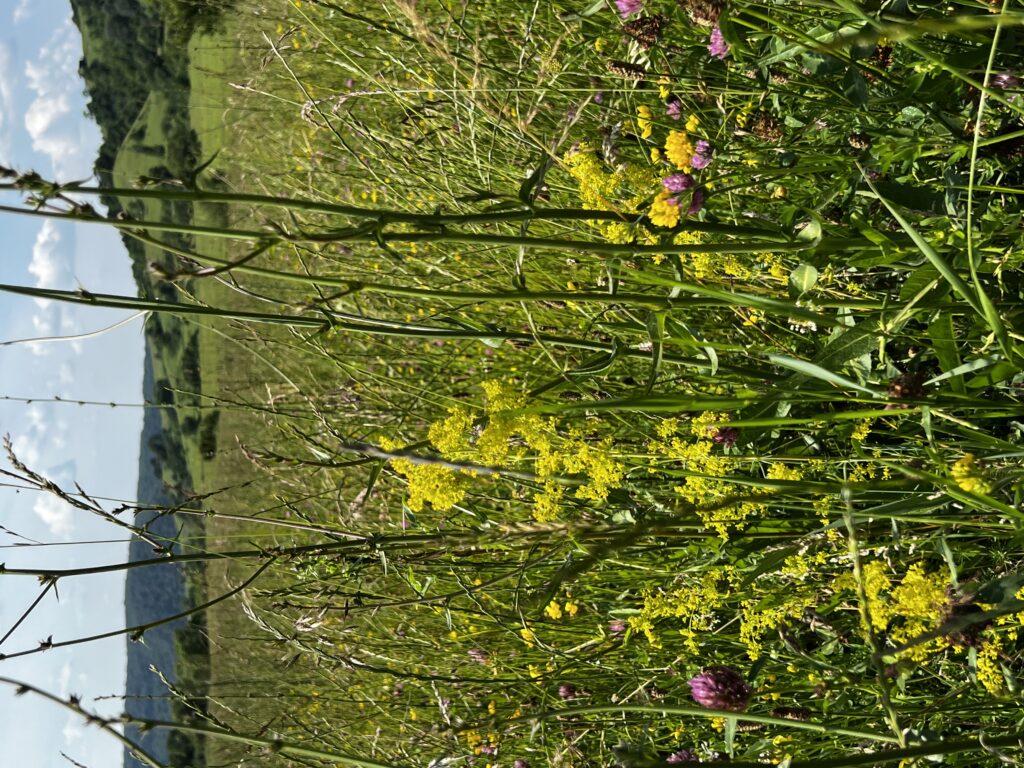 Hay meadow at Angofa
Hay meadow at Angofa
After just two years of this rejuvenation, the amount and range of wild flowers growing in the hay meadow and 10ha outwintering paddock was stunning. A recent survey there identified 240 wildflower species and more than 40 other plant species such as grasses. Also 108 bird, 25 mammal (including brown bears), 11 reptile/amphibian and 60 insect (butterfly/moth/cricket) species.
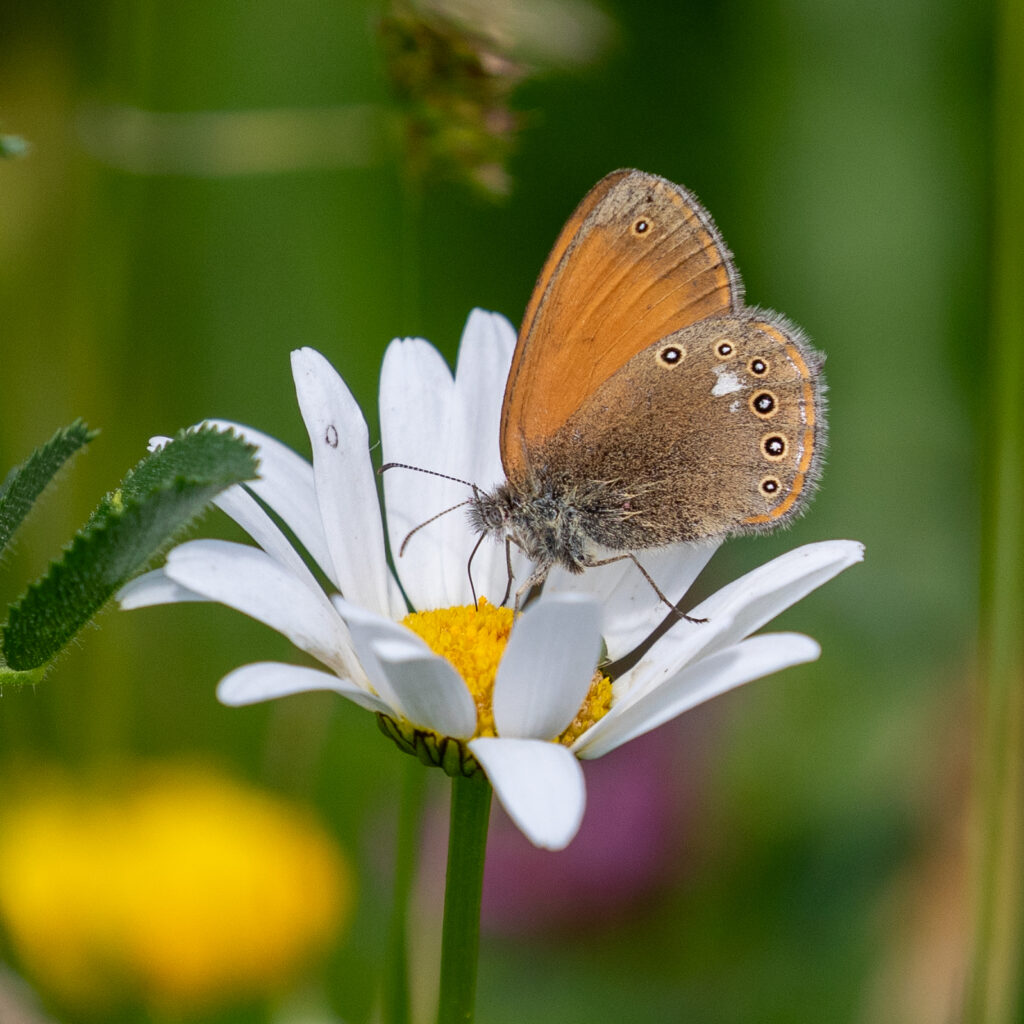
The herd is now 60 strong, with cows calving outside in April and May. Aberdeen Angus was chosen because this breed is eligible for annual support payments from Romania’s Rural Development Programme, they are hardy – winter temperatures often drop to minus 20oC and are commercial with good sale prices for meat and breeding.
The calves are weaned at the end of the year. Males are uncastrated and mostly sold at six to ten months of age as stores – most going for fattening and 20% as potential breeding bulls. Heifers are also sold at ten months making around £685 and the bulls sell for £600.
The farm is currently making a profit of about £68,000 a year, over half of which comes from Basic Payments and Agri-environment schemes, which together bring in about £213/ha/year.
As the taste for beef in Romania increases, Aberdeen Angus farming is growing fast. Many of these herds are owned by large-scale outside investors, but ADEPT’s aim is to work with local communities to build their own herds.
ADEPT is also breathing new life into the two buildings that survived Ceausescu’s heinous idea of destroying villages (2,000 went in all) and moving rural dwellers to high rise flats in the towns.
These are being renovated into a Wildlife Centre for visiting botanists and ecologists and a house for the farm manager to live on-site. There will also be conference facilities and overnight accommodation for visiting groups – like future members of Pasture for Life perhaps?
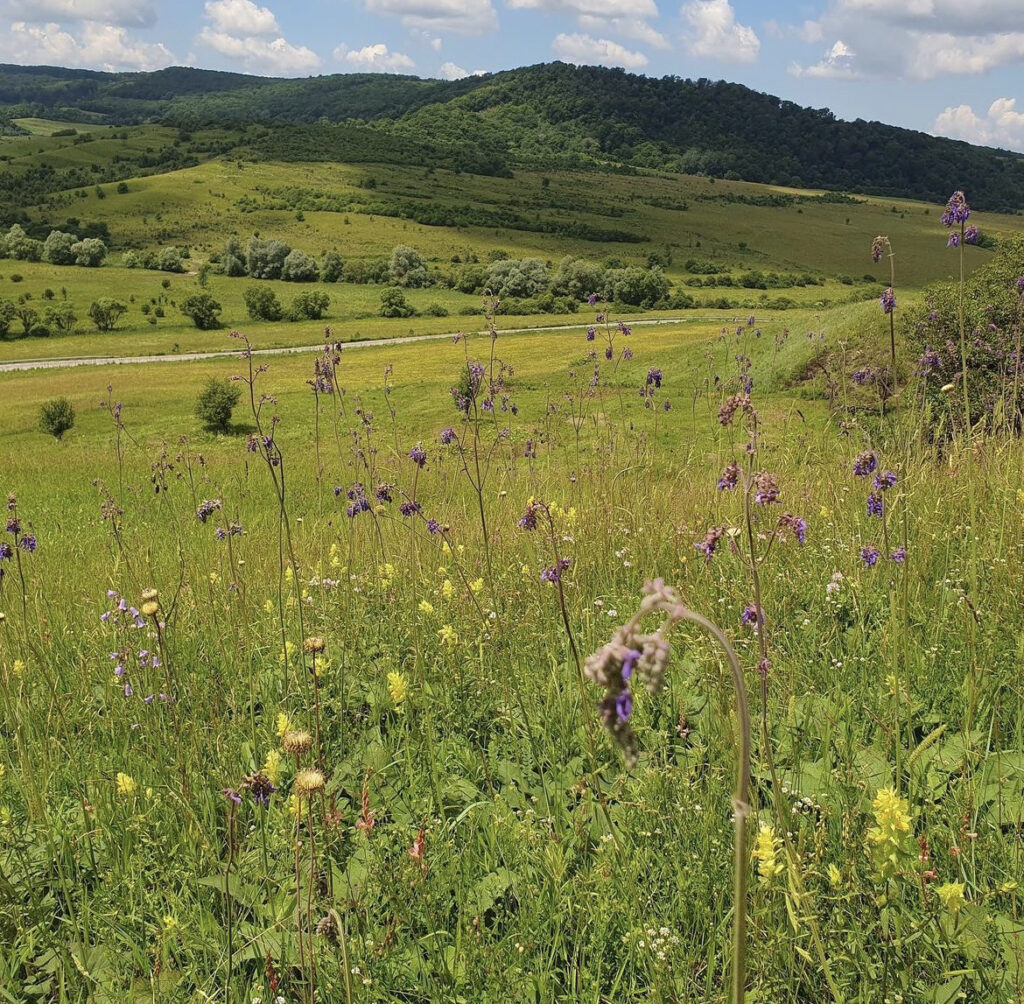
Highlights
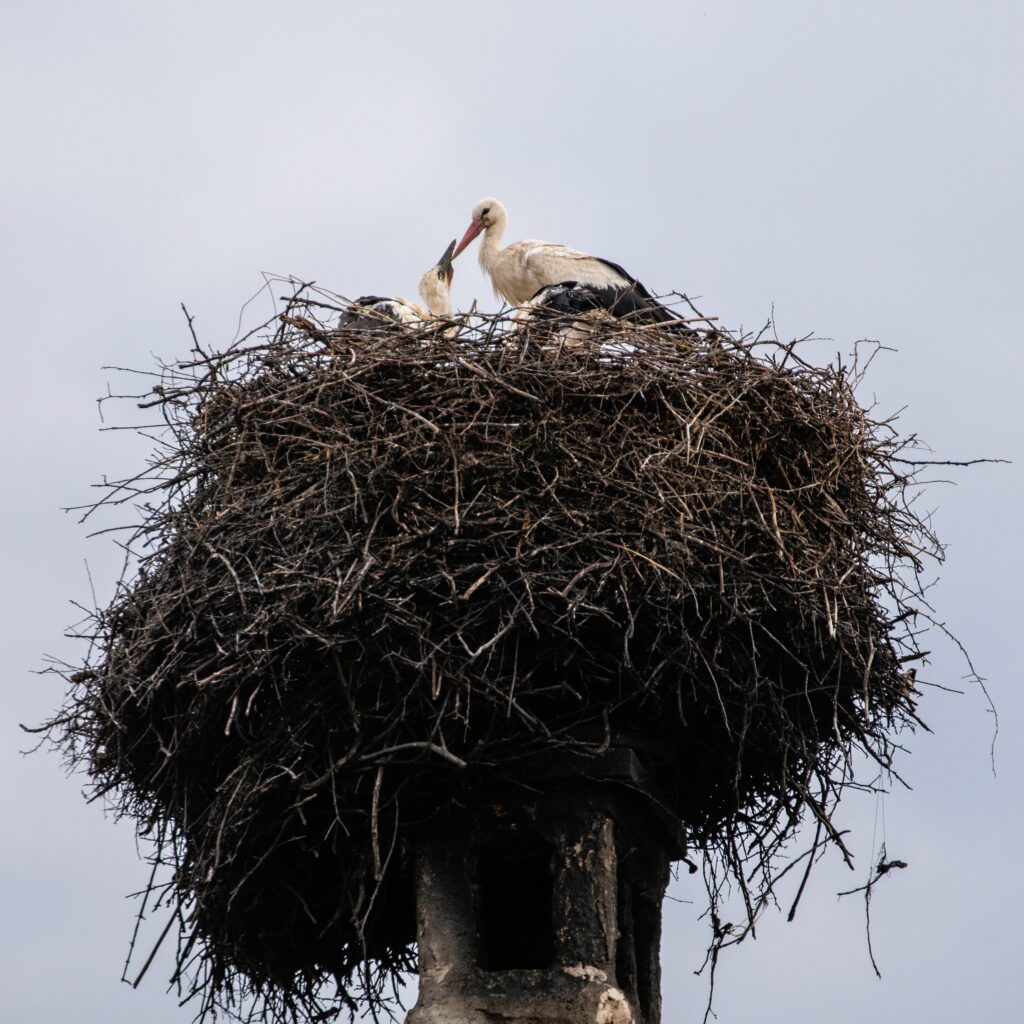 Stork on her nest atop the chimney of Viscri School
Stork on her nest atop the chimney of Viscri School
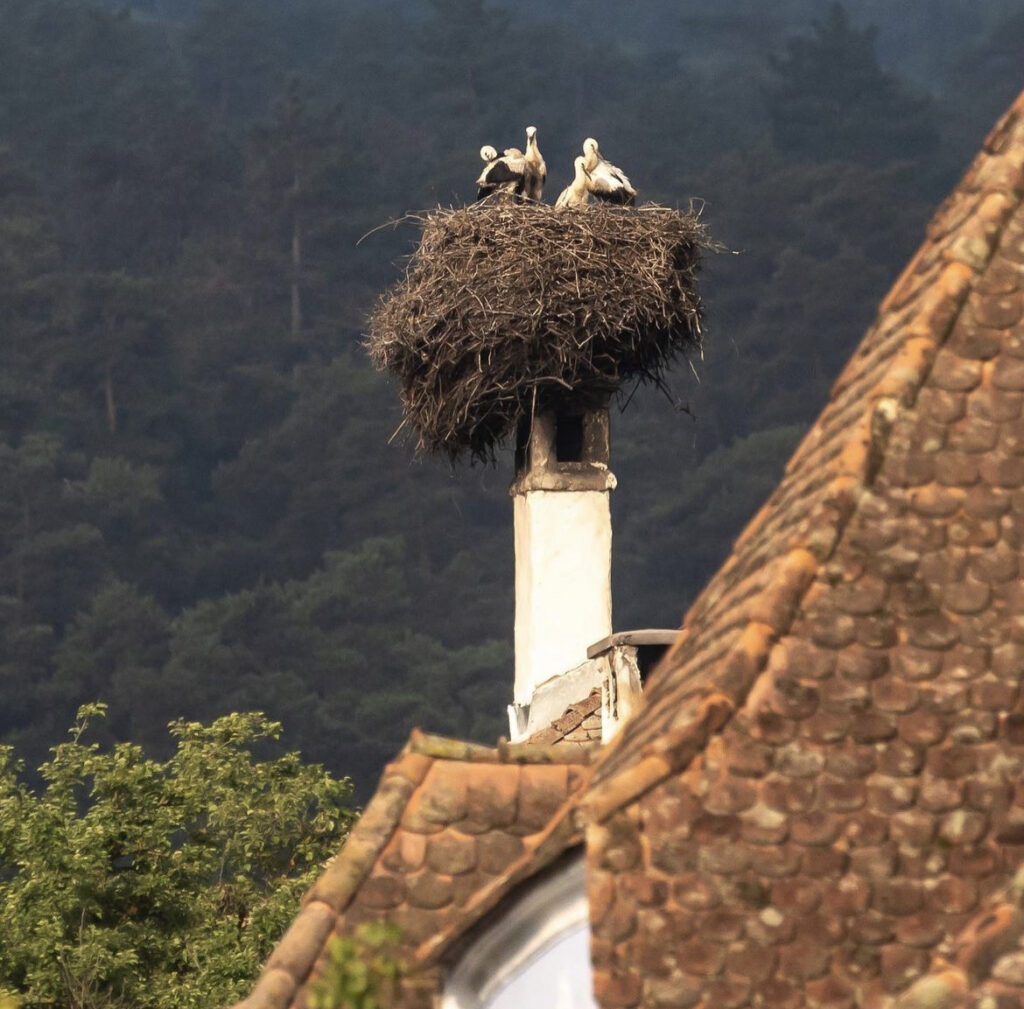
The trip was a visual treat, packed with unforgettable vistas and moments:
- The stork feeding her chicks on a nest atop the chimney of Viscri School
- The impromptu late-night party with home-brewed beer and cherry brandy and Romanian folk music played majestically by a famous violin player
- The Transylvania Florilegium, a large leather-bound book containing paintings of flowers growing in the region and on display at King Charles house – yours for £13,000 a copy!
- Talking to the herdsman looking after the Viscri village cows on the communal land with this three dogs – one to round up the cows and the other two to protect them from bears!
- Drinking cocktails at local drinks business Pivnita Bunicii – made from fermented and double distilled elderflowers – delicious on a hot sunny day
- Picking and eating red and white mulberries from trees lining village streets
- Seeing spectacular bee-eater birds flying around a nesting site at Angofa
- Ben’s story-telling and enthusiasm for the communities he works for and clearly respects/loves dearly
The ADEPT team went out of their way to feed and accommodate us, get us from A to B and to teach and entertain us – our tour could not have been bettered.
There were many take-home messages – not least the fact that pasture-fed cattle can rejuvenate and reinvigorate damaged pastures – allowing the seed bank to flourish once more, something many Pasture for Life farmers can confirm.
And as it was clear that we can learn from these Romanian farmers, they, I am sure, could also benefit from seeing our grazing systems and hearing about our local food supply chains and routes to market.
I am certain our farmer members would offer them a very warm welcome indeed!

